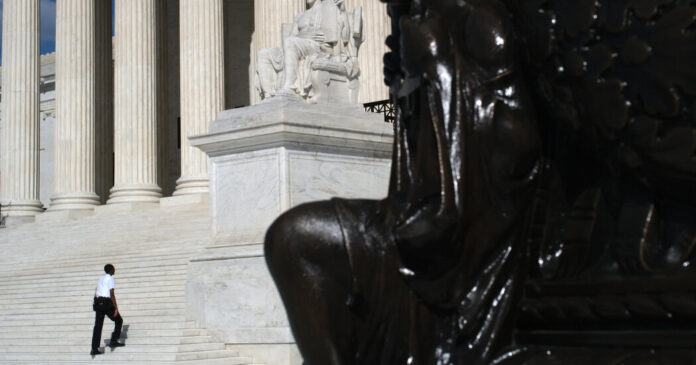These developments, Tribe continued, “almost certainly had an impact, however subconscious, on the chief justice and on Justice Kavanaugh, who has increasingly sought to distance himself from the hard right.”
Tribe warned that respite will be brief:
In a court that seems poised in the Harvard University and North Carolina University cases to interpret the Equal Protection Clause as a demand that government be blind to race, there remains a distinct danger that Section 2 will eventually be held flatly unconstitutional, a possibility that the Milligan ruling did not permanently foreclose and that several Justices pointedly underscored.
Even a cynic, Tribe wrote, “would have to concede that the court, and the country, dodged a deadly bullet in Milligan, something I view as worth celebrating. But that the gun remains loaded remains a cause for deep concern.”
The scope of the Milligan decision extends well beyond House districts. Ruth Greenwood, director of the Election Law Clinic at Harvard Law School, noted in an email that as a result of Milligan, “Section 2 of the V.R.A. will continue to protect the rights of people of color at the congressional, state legislative and local government level.”
Westwood cited the Democracy Docket, a liberal website that tracks election litigation, to illustrate the scope of current cases that will feel the impact of the Milligan decision.
Democracy Docket reported that “31 cases allege Section 2 claims and are currently pending in federal court,” most of which are challenges to state legislative redistricting plans, although others include challenges to judicial, county commission and public service commission districts.
Guy-Uriel Emmanuel Charles, also at Harvard Law School, wrote by email:
The first thing to understand about Milligan is that is does not shift the status quo, which is also what is surprising about Milligan. The expectation was that either the Court would radically interpret section 2 of the V.R.A. and narrow it significantly or it would essentially strike it down on constitutional grounds.
Not only was Charles surprised that Roberts voted in favor of the plaintiffs, but if he had not known that the author of the opinion was Roberts, he said, “Elena Kagan would have been my first guess.”
The court’s endorsement of the Voting Rights Act is not without significance, in Charles’s view:
By reaffirming the section 2 framework, lawsuits that were in the works in Louisiana, Georgia and South Carolina will continue to go forward. Milligan also sends a message to the lower courts, that they are to apply section 2 faithfully.
Kavanaugh, Charles noted,
is open to considering whether Congress has the authority to authorize race-based redistricting indefinitely into the future. Until he weighs in on that question, I cannot conclude that he has shifted. It seems to me that neither he nor Roberts was ready to address the constitutional question. My bottom line is that I’d be careful on the headlines that the V.R.A. has been saved. I don’t think we’ll be able to fully know that question until that issue is squarely before the court.
Kavanaugh purposefully left himself room to shift to a more conservative interpretation in future cases, according to Ellen D. Katz, a law professor at the University of Michigan. In “The Whole Point of the Enterprise,” Katz pointedly writes that a key element in the Milligan case is the refusal of Kavanaugh to go as far as Roberts in endorsing certain liberal premises used to support the Voting Rights Act:
Specifically, Justice Kavanaugh did not sign on to the portion of the Chief Justice’s opinion in which he wrote that being aware of racial considerations in redistricting differs from being motivated by them, that only the latter is prohibited in the redistricting process, and that race does not predominate simply because plaintiffs present illustrative maps created — “as our cases require” — to show that an additional majority-minority district could be drawn. Far from running afoul of statutory or constitutional constraints, consideration of race in this manner — and presumably subsequently by the state in response to the submitted maps and judicial rulings about them — simply shows the Section 2 regime to be operating as Congress intended and precedent allows.
Instead, Katz notes,
Justice Kavanaugh maintained, the authorization of “race-based redistricting” under the “statute cannot extend indefinitely into the future.” Justice Kavanaugh said he was declining to consider this argument “at this time” because Alabama had failed to press it.
In other words, Katz continues, “the invitation was, of course, clear: Bring this claim and the Milligan v. Allen dissenters might just have a majority in the next case.”


